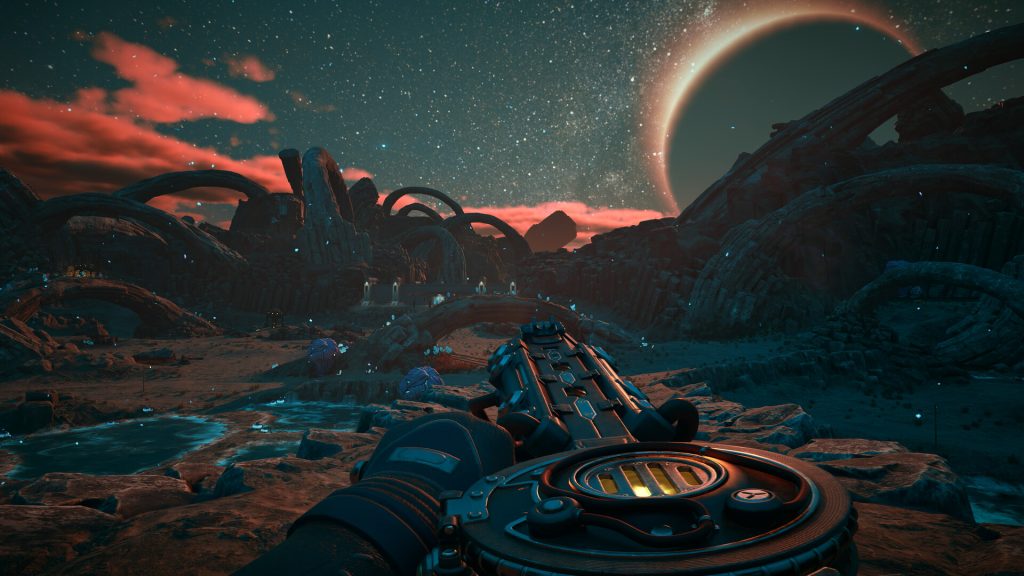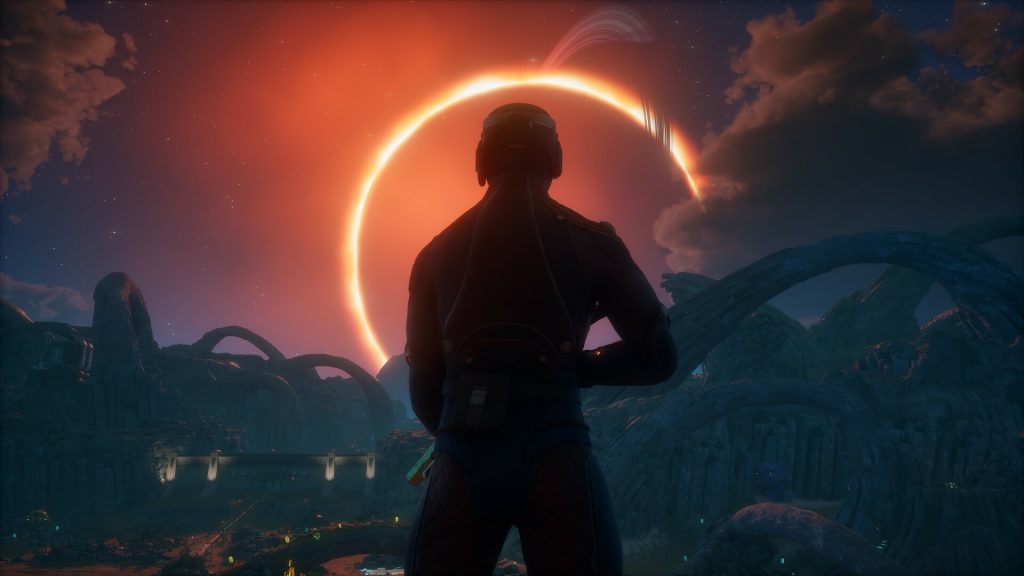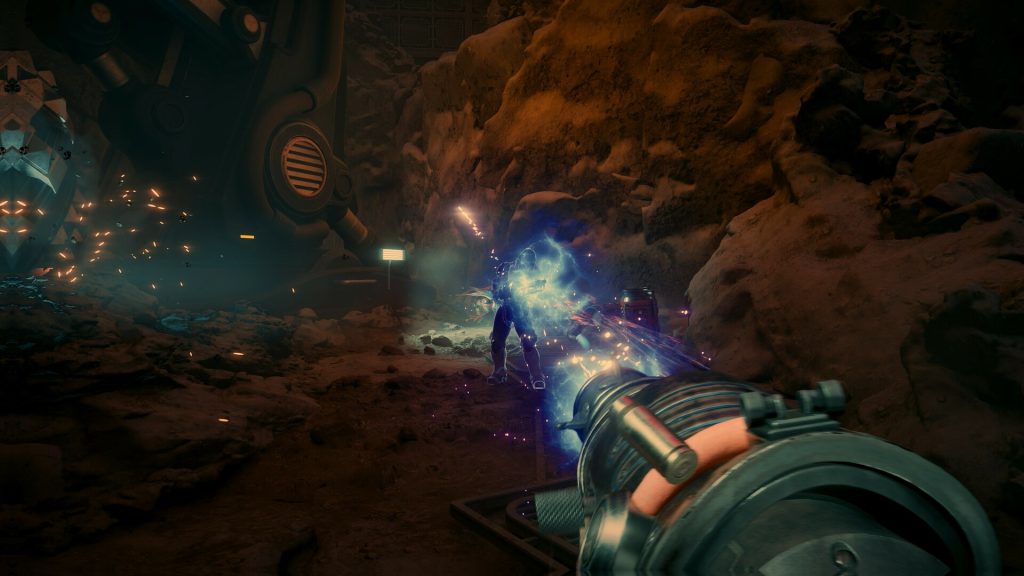The Outer Worlds 2 – What’s New?
The Outer Worlds 2 comes loaded with anticipation. 2019’s original game was a commercial success, but there’s an overriding feeling the experience didn’t quite live up to its potential. In pursuit of a bigger, bolder, and better sequel, the original’s foundation was broken down into its essential pieces — gunplay, world design, mission variety, and so on – before considering how each part can be unified. This sequel isn’t a complete rebuild though; The Outer Wilds 2 is a refinement of what came before. If the story is a sun, then the characteristics of each player’s avatar are its orbiting planets: driving forces which interact organically. Here, we’ll break down 15 differences between The Outer Worlds 2 and its predecessor.
Expansive Exploration
[embedded content]
The Outer Worlds eschewed vast, interconnected biomes for neatly segmented zones, with players then space-hopping through semi-linear paths. Despite delivering a tightly curated narrative, many players felt this design choice failed to reflect the limitlessness of outer space. So, with more time and a bigger budget, the sequel is embellishing everything that was great in The Outer Worlds: deeper lore, more complex characters, and expansive territories which reward exploration. The Outer Worlds 2 features a wealth of unique landscapes; diverse, dynamic, and packed with hidden detail for players to discover.
A New Frontier
The Outer Worlds 2 transports players to the wealthy principality of Arcadia, a distant space colony new to the series, with stories not directly connected to The Outer Worlds. Crafting an entirely new setting for this sequel was a deliberate choice by the game. In doing so, the game is honouring the narrative decisions made by players in the first game whilst not overriding whatever ending they received. As for Arcadia itself, it’s a landscape ruled by the Protectorate, whose monopoly on faster-than-light travel has invited corporate entities and cult-like zealots to challenge their dominance.
Expanded Mobility
Complementing the sequel’s larger environments is a suite of new mobility options. Their implementation, is to encourage exploration while ensuring ventures off the beaten path are more interesting and enjoyable than the first game. Sprinting returns, but players now have access to slides and double-jumps; parkour skills, essentially, which will support traversal through The Outer Worlds 2’s non-linear maps.
A Fresh Perspective
The Outer Worlds was exclusively a first-person experience. There’s a suggestion third-person perspectives were intended – even created in game code – but weren’t rolled out due to incomplete animations. Well, in The Outer Worlds 2, seamless transition between first and third-person cameras will be available, giving a fresh perspective on the action while answering requests from the community in the process.
Overhauled Character Creation

In The Outer Worlds 2, players will assume command of an Earth Directorate Agent who’s in Arcadia investigating mysterious rifts in the space-time continuum, with the Protectorate’s Time Skip tech believed to be the cause. The ‘what’ of a character is the only pre-determined aspect, but as every fan of the genre knows the all-important decisions on who the character is are made during their creation. Backgrounds – which define who a character was before joining the agency – traits, behaviours, skills, all are determined during The Outer World’s sprawling character creation phase, and they’ll determine the options available to players to interact with the world.
More granularly, attributes are out, but in their place are positive traits. Encompassing faster movement, improved crafting, or critical hit potential, traits will define player experiences in profound ways. There are strategic trade-offs here too: every player gets a positive trait but a negative trait comes in exchange for a subsequent positive trait. So, that critical chance boost could be paired with a weak body that is prone to injury.
Refined Flaws
Flaws return from The Outer Worlds, but like most things in this sequel they’ve undergone a process of refinement rather than reinvention. Flaws aren’t selected during character creation like traits; instead, they’re presented to players as they progress. Most interesting here is they appear to dynamically reflect a player’s in-game behaviour. For example, if a player habitually pulls the trigger after their magazine has depleted the game will present it as a flaw. It’ll say, “hey, you keep letting your weapon run out of ammo so we’ll give you a 50% boost in capacity, but if you let your magazine run out again we’ll reduce your damage potential for a short time”. Others give loud, cracking knees to silent, stealthy players in exchange for faster crouch speed, or both auto-healing and blurred vision when staring at the sun. Flaws, then, tweak gameplay in humorous ways. They’re optional but can’t be deactivated once chosen, and they’ll ensure each playthrough has its own unique identity.
Expanded Perks
The amount of perks available in The Outer Worlds 2 has expanded significantly compared to the first game, and they’re designed to more meaningfully alter how a character performs. For example, there’re perks to boost the healing potential from food and drink, increase melee power, or improve pickpocketing skill. With over ninety available, there are substantially more opportunities to create tailored builds with specialised playstyles then the original game.
Greater Emphasis on Skills Over Stats
The skills list in The Outer Worlds 2 has been refined, slimming the choices available to leave the options that matter most. Covering everything from combat specialisation, explosives handling, and engineering capability to scientific acumen and conversation skill, investing in particular skills opens specific perk pathways, enabling players to truly funnel their character towards a specific build. This newfound emphasis on skills ensures every point earned makes a credible difference to the experience, rather than being a gradual process akin to the first game.
Impactful Factions

Including the already-mentioned Protectorate – the authoritarian government ruling Arcadia – there are three main factions vying for player attention in The Outer Worlds 2. Corporate superpower Auntie’s Choice – a merging of two entities from the first game, Auntie Cleo and Spacer’s Choice – and Order of the Ascendant also have significant presence in the world. Their neon billboards, posters, and propaganda dominate the landscape, illustrating the rampant capitalism and geo-political conflict defining Arcadia like a bandaid covering scars.
New Lineup of Companions
The Outer Worlds 2 comes suited with six new companions, followers with their own perspectives, opinions, and beliefs tied to the faction they represent. There’s a fellow Earth Directorate Agent, a scientist connected to the Order of the Ascendant, a floating robot, a rifle-wielded member of Auntie’s Choice, a cultish rogue, and a guy from the Protectorate with a hammer. Sometimes, their intentions mysteriously align with the player’s, and other times they’ll stand in opposition; their responses likely depend on how players choose to progress, whether through diplomacy, subterfuge, or violence.
Improved Gunplay
One aspect a lot of effort has gone into is The Outer Worlds 2’s gunplay, and reports indicate weapons in this sequel feel weightier and more impactful, their movements are snappier, sound design is crisper, and animations for aiming, recoil, and reloading are all smoother and more lifelike. The game took inspiration from other FPS franchises, and the effort looks to be paying off.
New weapons
Alongside improvements to gunplay, the sequel is also introducing new weapons and weapon types, many of which lean into the series’ brand of quirky humour. For instance, a Pop-Up gun fires advertising drones to distract enemies with playful jingles. The Spectrum Dance Saber grants bonuses if enemies are slashed in time to a musical beat, and – returning from The Outer Worlds – is the Shrink Ray. This time, miniaturising enemies with the ray’s beam makes them permanently tiny.
Throwables are Introduced
Throwable weapons have been confirmed for the sequel, including traditional grenades. However, this being a sci-fi-come-art nouveau story, grenades will feature in non-traditional guises: smoke grenades, yes, but shock grenades, and experimental science grenades which are sure to add a dose of chaos to combat encounters.
New Science-Type Armour

Details are light on all the new types of armour incoming to The Outer Worlds 2, but what has been confirmed is the arrival of science armour. The series’ science weapons present unusual prototypes with strange effects and odd visuals, so we’re expecting science armour to shake up defence in peculiar ways. Rumours suggest that there’ll be “living” armour, with players wearing an entity that’ll lash out at foes independent of their actions.
Radio Stations
Keeping players company throughout their Arcadian mission are in-universe radio stations managed by each of the game’s main factions. Between bursts of on-brand musical interludes, presenters will comment on player actions through the lens of their faction’s propaganda. Beyond providing in-game entertainment, these radio stations will flesh out the identities of the overarching factions, giving them a presence in the world beyond neon-lit visuals.


Comments are closed.